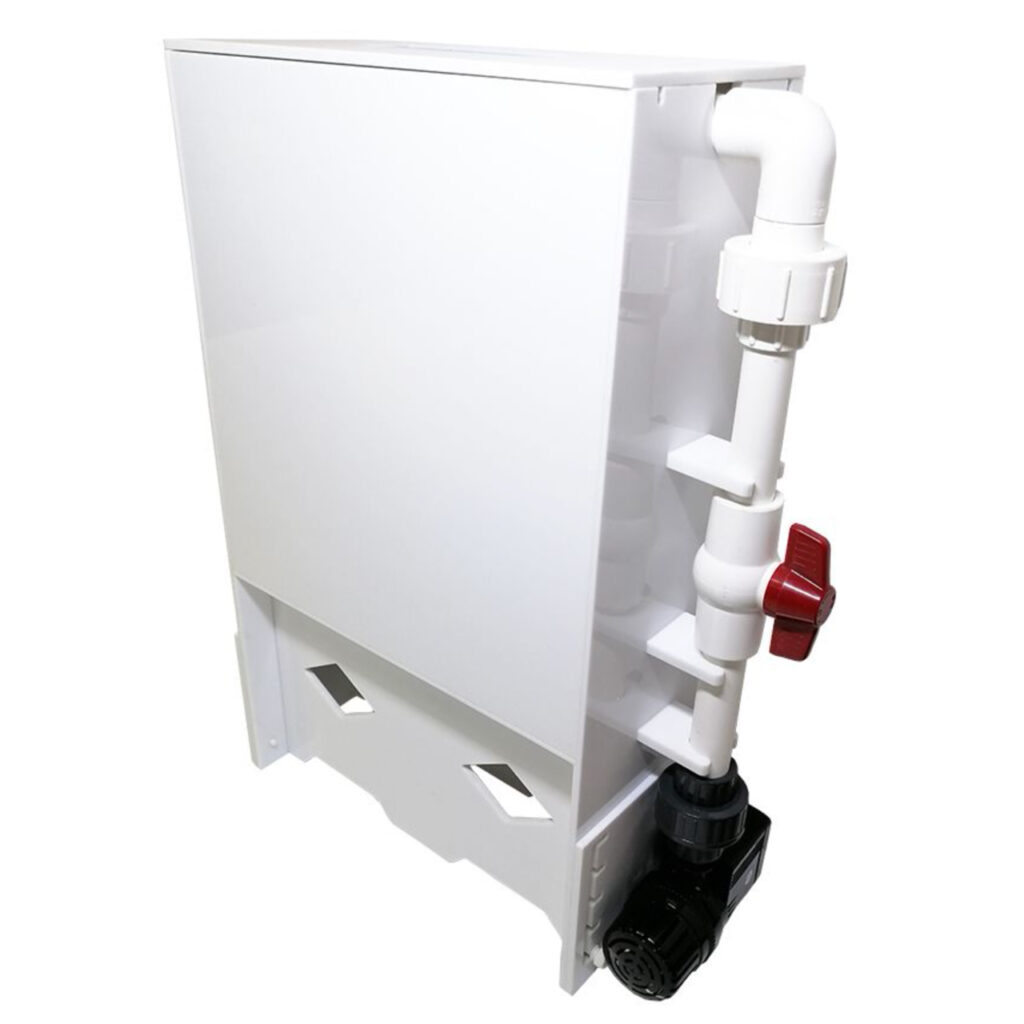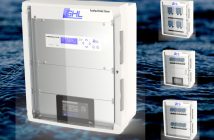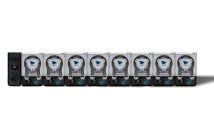
IceCap just announced the release of a series of new algae scrubbers (AKA turf scrubbers) that are an advancement / enhancement to IceCap’s standard algae scrubbers which have been on the market for nearly two years. IceCap is calling the new scrubbers the PRO Series Turf Scrubbers and they come in “three flavors” for aquariums up to 350 gallons.
The IceCap Algae Turf Scrubbers are a plug-and-play solution to battle undesirable algae in the aquarium. As the algae grows in the self contained scrubber, nitrates, phosphates and other pollutants are absorbed and utilized by the algae growing in the scrubber. Thus, reducing the amount of dissolved organic waste in the water column. The scrubber sits directly in the sump compartment and it appears to have adjustable height legs on either side of the housing.
What we really like about this new design is that it is only slightly more expensive than the regular IceCap series scrubbers and best of all, it is plug in play. There is no need for additional plumbing and adjusting flow rates from a separate pump or manifold. Keep reading for specs, pricing and more about how you can benefit from turf scrubbers in your aquarium.

Almost algae harvesting time
Available Sizes:
IceCap PRO Turf Scrubber – Small 14w
Retail Price: $249.99
Item #: IC-AGS-100PRO
Dimensions: 7.5 x 6 x 17in (LxWxH)
LED Lamp Number: 2 x 7w
Total LED Wattage: 14w
Screen Size: 8.5 x 6in
Water Pump: EVO-1000 (20w)
Water Depth Range: 4-10in
Max Flowrate: 250gph
Tank Rating: Aquariums up to 100gal
IceCap Algae Turf Scrubber – Medium 29w
Retail Price: $339.99
Item #: IC-AGS-200PRO
Dimensions: 8.5 x 6 x 21in (LxWxH)
LED Lamp Number: 2 x 14.5w
Total LED Wattage: 29w
Screen Size: 11.8 x 7.4in
Water Pump: EVO-1000 (20w)
Water Depth Range: 4-10in
Max Flowrate: 500gph
Safety Drain Size: 1/2in
Recommended Flow: 500gph
Tank Rating: Aquariums up to 225gal
IceCap Algae Turf Scrubber – Large 36w
Retail Price: $5999.99
Item #: IC-AGS-400PRO
Dimensions: 12.6 x 6 x 21in (LxWxH)
LED Lamp Number: 4 x 30w
Total LED Wattage: 36w
Screen Size: 15.8 x 11.8in
Water Pump: EVO-2000 (30w)
Water Depth Range: 4-10in
Max Flowrate: 800gph
Tank Rating: Aquariums up to 350gal
How It Works
IceCap Algae Scrubbers are designed to be placed directly into a sump so that the water flowing through the unit can drain directly back into the normal filtration system. Water is fed into the scrubber by the included IceCap EVO water pump. The water going into the unit is trickled down onto a screen that is illuminated on both sides by a powerful field of LED lights. As algae begins to grow on the screen, it “scrubs” the aquarium water of excess nutrients, resulting in less algae growing inside the display tank. Once the screen is covered in algae, it can be “harvested” by removing a sizable portion, thereby removing the contaminants from the system.
How to Harvest Algae
Remove the top and loosen the quick-release union on the side. Lift the pipe and algae screen out and run them underwater in the sink. Then use a credit card or similar object to remove the excess algae buildup. Be careful not to remove all of the algae from the screen as this will slow growth when placed back into the system. As with any scrubber, you will want to leave some algae behind to seed the next batch for continued algae growth and nutrient export. Under normal circumstances, expect to harvest algae every 1-3 weeks but growth can slow somewhat as nutrient levels decrease in the aquarium.
When to Run Your Scrubber
Many hobbyists prefer to run their algae scrubbers on a reverse daylight schedule to help reduce pH swings from day to night. This can be accomplished by plugging the LED lights into a timer or aquarium controller. Ideally you will want to turn on the algae scrubber light once the aquarium lights go off and have it run for approximately 12 hrs per light cycle.
The IceCap Pro Scrubber should start showing up on store shelves and online stores soon and they are already available at our online retail store.





